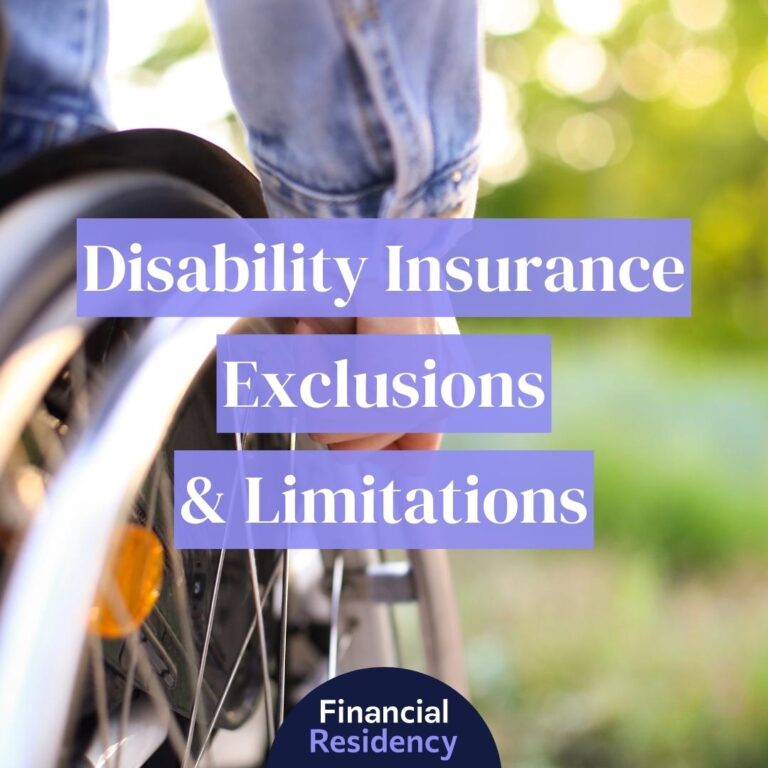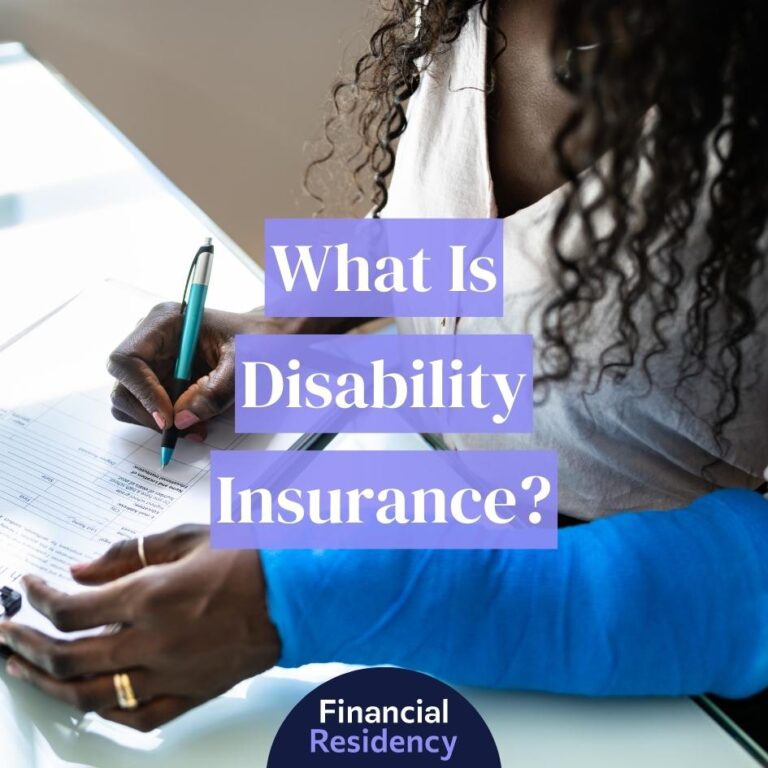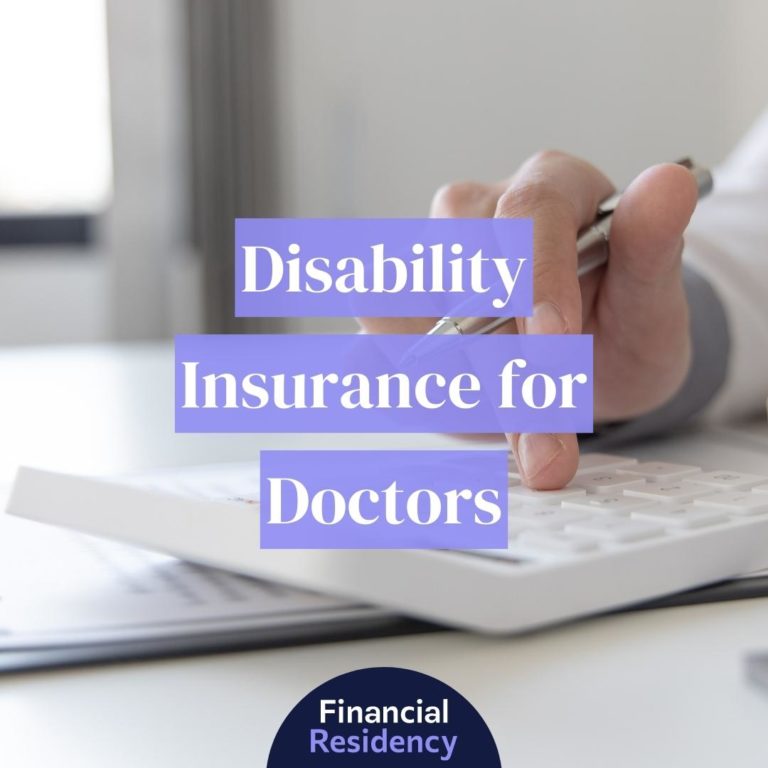Anesthesiologists have one of the most critical positions in the medical field and are paid well for it. But what happens if you can’t practice due to a disability? You’re still on the hook for your bills, but without income, that won’t last long.
Disability insurance for anesthesiologists can protect your investment and ensure you live the life you’re used to, but how do you know which policy is right?
Check out our disability insurance for anesthesiologists guide to choosing the right policy for you.
What Is Disability Insurance for Anesthesiologists?
Disability insurance may not be something you thought of when going to medical school, but now that you’ve started your career, it’s time to consider protecting your investment with disability insurance for anesthesiologists.
This type of insurance replaces income loss if you become disabled. Anesthesiologists can purchase short or long-term disability insurance, and some practices may also offer short-term disability as a part of your compensation package.in
No matter where you get it, the coverage replaces your income for no more than 12 months for short-term coverage and over one year for long-term coverage. Each policy has different requirements to qualify for a disability and terms they’ll pay for the coverage.
Why Do Anesthesiologists Need Disability Insurance?
You might wonder why anesthesiologists would consider disability insurance. After all, the average anesthesiologist’s salary is $419,000, so why would they need insurance?
The high salary is precisely the reason it’s necessary. What would you do if your disability prevented you from working? Anesthesiologists face many risks for disabilities, including mental health issues, addiction, and physical issues due to the stressful nature of the job.
If you could not work for many years, consider how it would financially affect you and your family.
Anesthesiologist-Specific Policies
Choosing anesthesiologist-specific policies is the key to ensuring you have proper disability coverage. Since anesthesiologists earn a high income, protecting it adequately is vital.
Enhanced Partial Benefit
An enhanced partial benefit policy pays benefits if you lose some of your income. For example, many policies pay this benefit if you have a disability that decreases your income by 20% or more.
Many insurance companies will pay the full benefit if your income plus the benefit isn’t more than you made before the disability.
Enhanced True Own Occupation
Some companies, like Guardian, offer an Enhanced True Own Occupation policy. This is a step up from your own occupation policy, which pays you a benefit if you can’t work your specific job as an anesthesiologist. With Enhanced True Own Occupation, you get coverage not only if you can’t work as an anesthesiologist but even if you work in another position.
Serious Illness Endorsement
Another endorsement some companies like Guardian offer is the Serious Illness Endorsement. This benefit pays in addition to your regular benefit if you experience a serious illness, such as a heart attack, stroke, or cancer.
5 Best Anesthesiologist Disability Policies
Here are top 5 providers of disability insurance for anesthesiologists:
1. Principal
- BBB Rating: A+
- AM Best Rating: A+
Principal is a top provider of disability insurance. The policies usually include a true own occupation or partial own occupation rider along with other flexible riders to make the policy your own.
Principal’s policies are renewable until age 65, and they have a wide range of waiting periods, depending on your needs, ranging from 30 days to 1 year.
2. Guardian
- BBB Rating: A+
- AM Best Rating: A++
Guardian is one of the most prominent disability insurance companies for anesthesiologists. As we said earlier, Guardian has some unique policies that allow you to collect benefits if you’re disabled and cannot work as an anesthesiologist but can work in other positions.
Guardian’s policies are renewable until age 70 and have elimination periods ranging from 30 to 720 days. The longer the elimination period, the fewer premiums you pay, but the longer you wait for benefits to begin.
Guardian offers the largest selection of riders and some of the most profound disability insurance for hands-on doctors.
3. Ameritas
- BBB Rating: A+
- AM Best Rating: A
Ameritas, a newcomer to the disability insurance industry, offers a robust policy for anesthesiologists. However, one major difference is you must choose between a non-cancelable and renewable policy. You cannot have both, like you can with other companies, like Guardian.
Like most providers, Ameritas offers a true own occupation rider, and policies are available up to age 70.
4. The Standard
- BBB Rating: A+
- AM Best Rating: A
The Standard offers a robust policy for anesthesiologists, which includes many options for riders. The best policy they have is the Platinum Advantage, which can be renewed up to age 67, but to make it non-cancelable, you must purchase a rider.
The Standard offers elimination periods of 60 days to one year, and they offer a Cost of Living Adjustment rider to adjust your benefits of inflation increases.
5. Mass Mutual
- BBB Rating: A
- AM Best Rating: A++
MassMutual is another large provider of disability insurance for anesthesiologists. They offer a couple of policies, and you can customize both to ensure proper protection for your income level.
However, unlike other policies, you must add a provision for true own occupation if you want that level of coverage. The policies offered are non-cancelable and guaranteed renewable up until age 65. MassMutual also has limitation periods ranging from 60 days to 2 years.
The Cost of Disability Insurance
The cost of disability insurance varies by company and individual. Disability insurance costs an average of 1% to 3% of your annual salary. For example, if you make the average $419,000 anesthesiologists make, you’ll pay between $4,190 to $12,570 per year for insurance.
However, how much you pay depends on many factors, including the following.
Risk Factors
Like any insurance policy, lenders look at the risk you pose. The higher your chances of needing a payout, the higher your premiums.
Age
The longer you wait to buy disability insurance, the riskier it is for insurance companies. By buying disability insurance right out of medical school when you start your residency or fellowship, you’ll pay the lowest premiums. But, as you age, you become a higher risk for heart attacks and stroke, which would trigger a claim for your disability insurance.
Current Health
Most insurance companies assess your current health. They’ll consider any high risks you pose, such as high blood pressure or a chronic illness.
Past Medical History
Your past medical history could indicate issues you have or will have that could put your insurance company at risk. Some insurance companies also exclude preexisting conditions from your disability policy. If you become disabled due to this issue, your insurance will not pay benefits.
Smoker vs. Non-Smoker
Non-smokers pay lower premiums than smokers because they have a lower risk of health issues. If you’re a smoker, you have a higher risk of certain diseases, including cancer and heart disease. As a result, insurance companies take a larger risk in insuring you.
Residence/Location
Disability insurance rates vary by location. Since the cost of living varies by area, insurance may be more expensive in areas with a higher cost of living.
Payout Percentage
No insurance policy pays 100% of your income, but the higher the percentage of your income your insurance covers, the higher premiums you’ll pay. The most common amount of coverage is 60%, but you may find higher coverage amounts.
Elimination Period
During the elimination period, insurance companies do not pay benefits. So, for example, if you have a 60-day elimination period and you fall and hurt your back, making you unable to work, you wouldn’t receive a payout for 60 days.
Most policies, as discussed above, have different elimination periods. The longer you can go without a payout, the less you’ll pay in premiums, and vice versa.
Guaranteed Renewable vs. Non-Cancelable
A guaranteed renewable policy renews each year, regardless of any changes in your life. However, the insurance company can charge you higher premiums each year you renew.
Non-cancelable insurance policies cannot be canceled unless you don’t make your payments and the premiums never change.
Any vs. Own Occupation
Some insurance policies only pay benefits if you cannot work any occupation, not just your position as an anesthesiologist. These premiums are lower than policies that cover your own occupation, paying benefits if you cannot practice anesthesiology even if you can do something else.
Short vs. Long-Term Policy
A short-term policy covers you for one year or less and is good in emergencies. However, long-term insurance covers you for the rest of your life or until retirement age, protecting your investment in your income.
Short-term coverage can cost much more than long-term, but many employers offer short-term group coverage as a part of a doctor’s benefits.
Rider and Provision Add-Ons
Any riders or provisions you add to your policy will increase its cost. However, they can be beneficial if they provide adequate protection, such as a Cost of Living Adjustment or a partial disability benefit.
Is Disability Insurance Worth It for Anesthesiologists?
Don’t overlook the need for disability insurance for anesthesiologists. It’s a key factor in protecting your income, even when you can’t work. You invested in your medical career, and if a disability stops it, don’t let it ruin you financially.
Choosing the best anesthesiologist disability policy is important. Not choosing proper coverage could leave you with much less income than you had while working. While no policy provides 100% coverage, getting adequate coverage is essential to maintain the same lifestyle.
Check out your options for disability insurance and protect yourself today!



